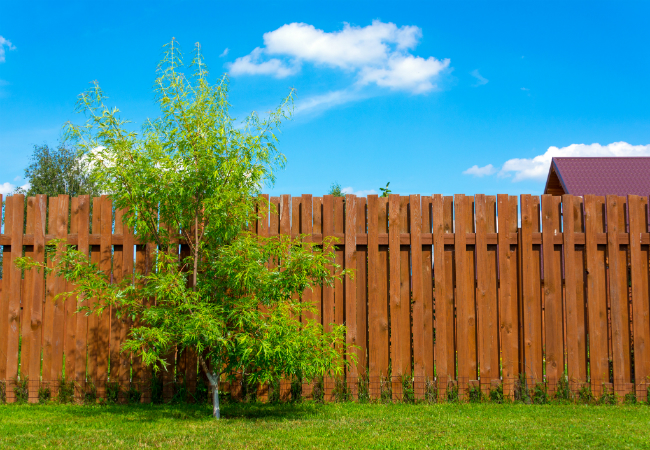Rarely do we see properties today that aren’t lined with fencing all around. Fencing has become a requisite among homeowners primarily to keep themselves safe from any intrusions and provide them privacy which adds to their comfort. If designed and built well, fences contribute to the overall aesthetic value of the property.

There are various types of fencing materials, including chain link, wood, and vinyl, but metal ones are known to be the sturdiest. The heavy quality of metal fences makes them reliable in keeping stray animals from entering your property and deterring outsiders with bad intentions. Still, there are manufacturing standards to be followed when making metal fences so that they stay intact for the longest time possible:
How are metal fences made?
The construction of fences depends on the type of metal used. Its longevity also lies in how well its concrete foundation is set. The following are the most common constructions of metal fences:
Wrought Iron
Wrought iron is derived from cast iron that is reshaped into rods by heating it repeatedly. The process it undergoes is so tedious, giving it its impressive tensile strength and ductility. Also, unlike steel, an alloy or a combination of different metals or metals with other elements, wrought iron is pure metal, making it more durable.
Wrought iron is known to be fibrous, making it less susceptible to rust. To further delay it from rusting, it is usually powder-coated. These explain why they are relatively pricier than other types of metal.
Solid Steel
Solid steel is processed similarly to wrought iron but with the use of more cost-efficient steel. They can be processed to imitate common wrought iron fence designs such as curves, tapered spears, curls, scrolls, and twists. These components are welded together to create beautifully patterned metal fencing panels.
Tubular Steel
These are fences still made of steel but with rods that are hollow inside. The tips of the metal sheets are welded together to create tubes without leaving pools of hardened metal in between. That way, they look just like solid rods. The rods are primed with a protective zinc coating before it is painted, but can still be susceptible to chips and corrosion.
Tubular Aluminum
Aluminum, which is the lightest of the metal fencing options, is also the cheapest. The biggest con with the material is the visible welding marks from the binding work done on the rods. Nevertheless, this lightweight and powder-coated fencing material resist corrosion well.
Corten Steel
Notable for its corrosion (COR) and tensile (TEN) strength,Corten or weathering steel is a less conventional material option for fencing. It is made of an optimal mix of copper, nickel, phosphorous, and chromium which, when exposed to the elements, develops a red-brown coating that strengthens it from corrosion.
Although it looks like it’s rusting, it is actually acclaimed for its unique aesthetic value. This makes it popular for use on building exteriors aside from fencing. This, along with its low upkeep requirement, also explains why it is relatively more expensive than other types of steel.
What type of metal should your fence be made of?
If your main consideration is durability and security for an affordable price, steel fencing wins by a landslide. It provides both the durability of wrought iron and the affordability of aluminum fencing. But, do note that, due to its weight, shipping costs could be hefty. That is one of the reasons why tubular steel fences have grown in popularity.
Aluminum fencing, on the other hand, is the main pick of environmentally conscious homeowners. Due to being lightweight, it can be welded more quickly to imitate wrought iron or steel fences but with a smaller carbon footprint.
Caring for Metal Fences
If properly cared for, tubular metal fences could last for as long as two decades and solid ones even up to a lifetime. The most common cause for its deterioration is rust-causing oxidation and moisture. No one can control when it rains, among other environmental factors, but here are things you can do to delay your metal fence from rusting:
Inspect for Scratches and Rust
Those who live in high-humidity areas are advised to check their fences as often as possible. During winter, when the road is most likely sprinkled with salt, therefore increasing the corrosion of your fences upon contact, the more frequently you should check for scratches or developing rusts.
Spot Treating
You can put a stop to paint chipping or early stages of rusting. First, brush off paint flakes and corroded material. Refine the clean using sandpaper. Then rinse the area using soap and water and wait until it dries.
Cover your working area with newspaper to keep it from getting stained from the chemicals you will apply. Rusty metal primers come in spray cans, which you have to aim well onto the affected area. After which, spray on the glossy top coat of the same color as your fence.
Cleaning
Aside from rusting, you could protect your fences from dirt like bird droppings and mud by wiping the panels down with a dampened cloth. For a more intensive clean, use soap that is suitable for painted surfaces and a non-abrasive sponge.
Fences are investments just like every other part of your property. Rusting is inevitable, but you can preserve your fences without expending sums of cash. Caring for them is important in keeping your property’s value up.
Leave a Reply